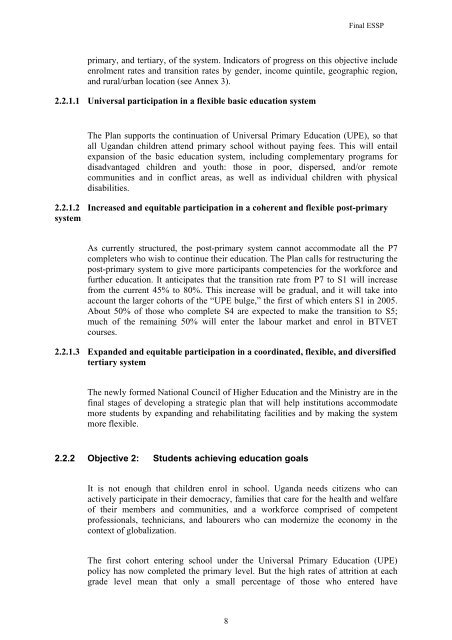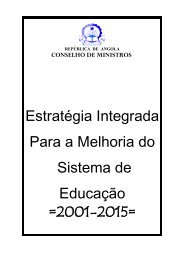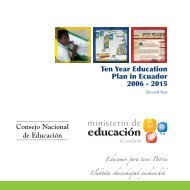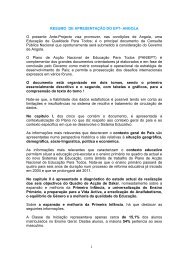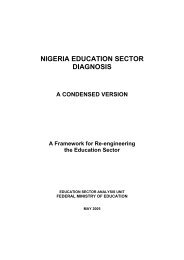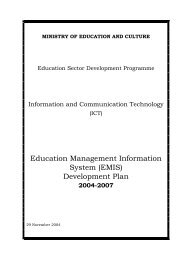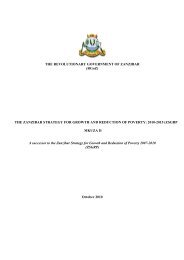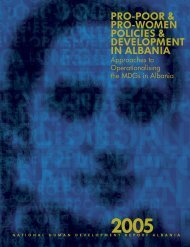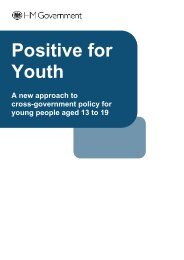Education Sector Strategic Plan 2004-2015 - Planipolis
Education Sector Strategic Plan 2004-2015 - Planipolis
Education Sector Strategic Plan 2004-2015 - Planipolis
Create successful ePaper yourself
Turn your PDF publications into a flip-book with our unique Google optimized e-Paper software.
Final ESSP<br />
primary, and tertiary, of the system. Indicators of progress on this objective include<br />
enrolment rates and transition rates by gender, income quintile, geographic region,<br />
and rural/urban location (see Annex 3).<br />
2.2.1.1 Universal participation in a flexible basic education system<br />
The <strong>Plan</strong> supports the continuation of Universal Primary <strong>Education</strong> (UPE), so that<br />
all Ugandan children attend primary school without paying fees. This will entail<br />
expansion of the basic education system, including complementary programs for<br />
disadvantaged children and youth: those in poor, dispersed, and/or remote<br />
communities and in conflict areas, as well as individual children with physical<br />
disabilities.<br />
2.2.1.2 Increased and equitable participation in a coherent and flexible post-primary<br />
system<br />
As currently structured, the post-primary system cannot accommodate all the P7<br />
completers who wish to continue their education. The <strong>Plan</strong> calls for restructuring the<br />
post-primary system to give more participants competencies for the workforce and<br />
further education. It anticipates that the transition rate from P7 to S1 will increase<br />
from the current 45% to 80%. This increase will be gradual, and it will take into<br />
account the larger cohorts of the “UPE bulge,” the first of which enters S1 in 2005.<br />
About 50% of those who complete S4 are expected to make the transition to S5;<br />
much of the remaining 50% will enter the labour market and enrol in BTVET<br />
courses.<br />
2.2.1.3 Expanded and equitable participation in a coordinated, flexible, and diversified<br />
tertiary system<br />
The newly formed National Council of Higher <strong>Education</strong> and the Ministry are in the<br />
final stages of developing a strategic plan that will help institutions accommodate<br />
more students by expanding and rehabilitating facilities and by making the system<br />
more flexible.<br />
2.2.2 Objective 2: Students achieving education goals<br />
It is not enough that children enrol in school. Uganda needs citizens who can<br />
actively participate in their democracy, families that care for the health and welfare<br />
of their members and communities, and a workforce comprised of competent<br />
professionals, technicians, and labourers who can modernize the economy in the<br />
context of globalization.<br />
The first cohort entering school under the Universal Primary <strong>Education</strong> (UPE)<br />
policy has now completed the primary level. But the high rates of attrition at each<br />
grade level mean that only a small percentage of those who entered have<br />
8


